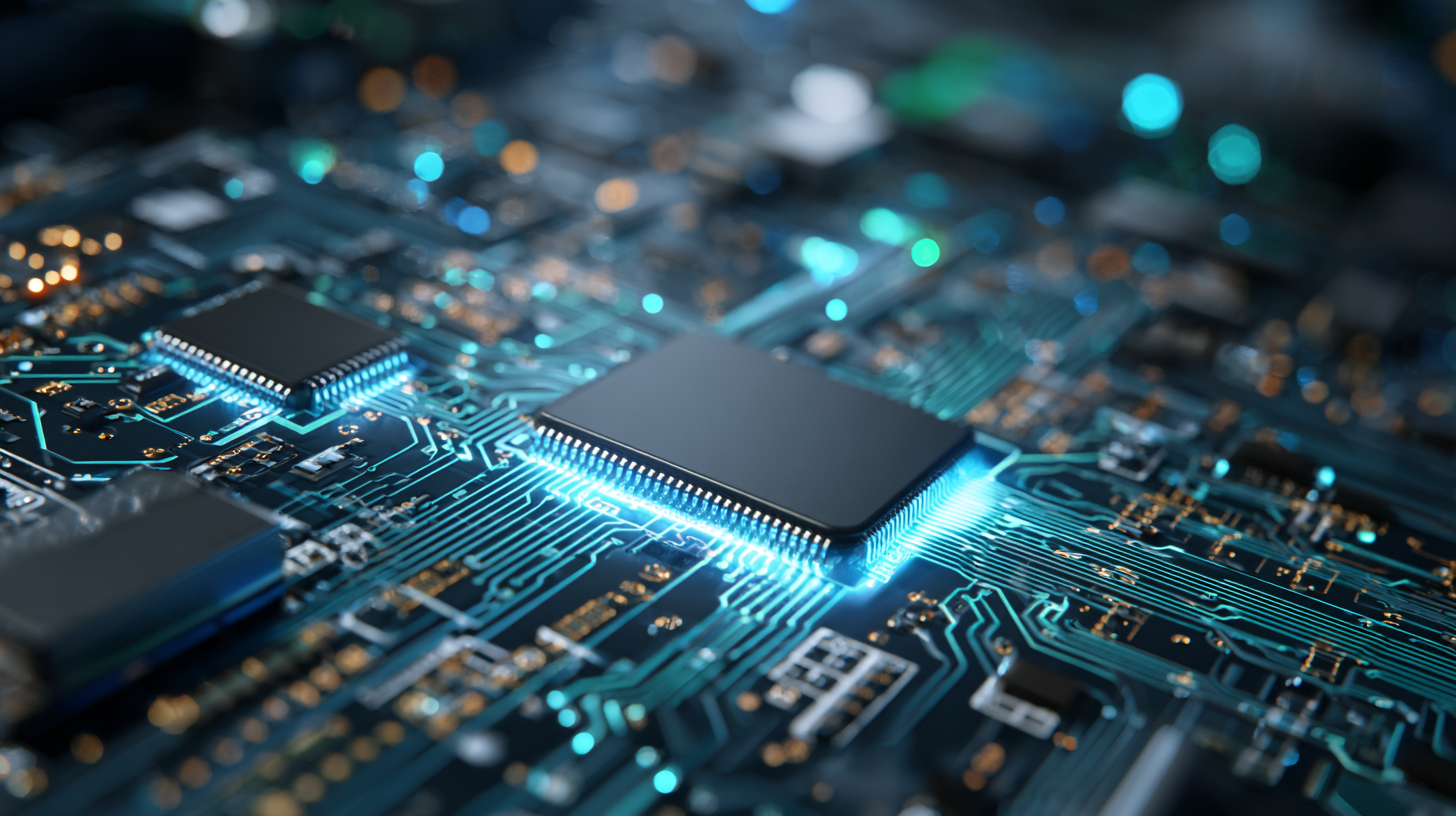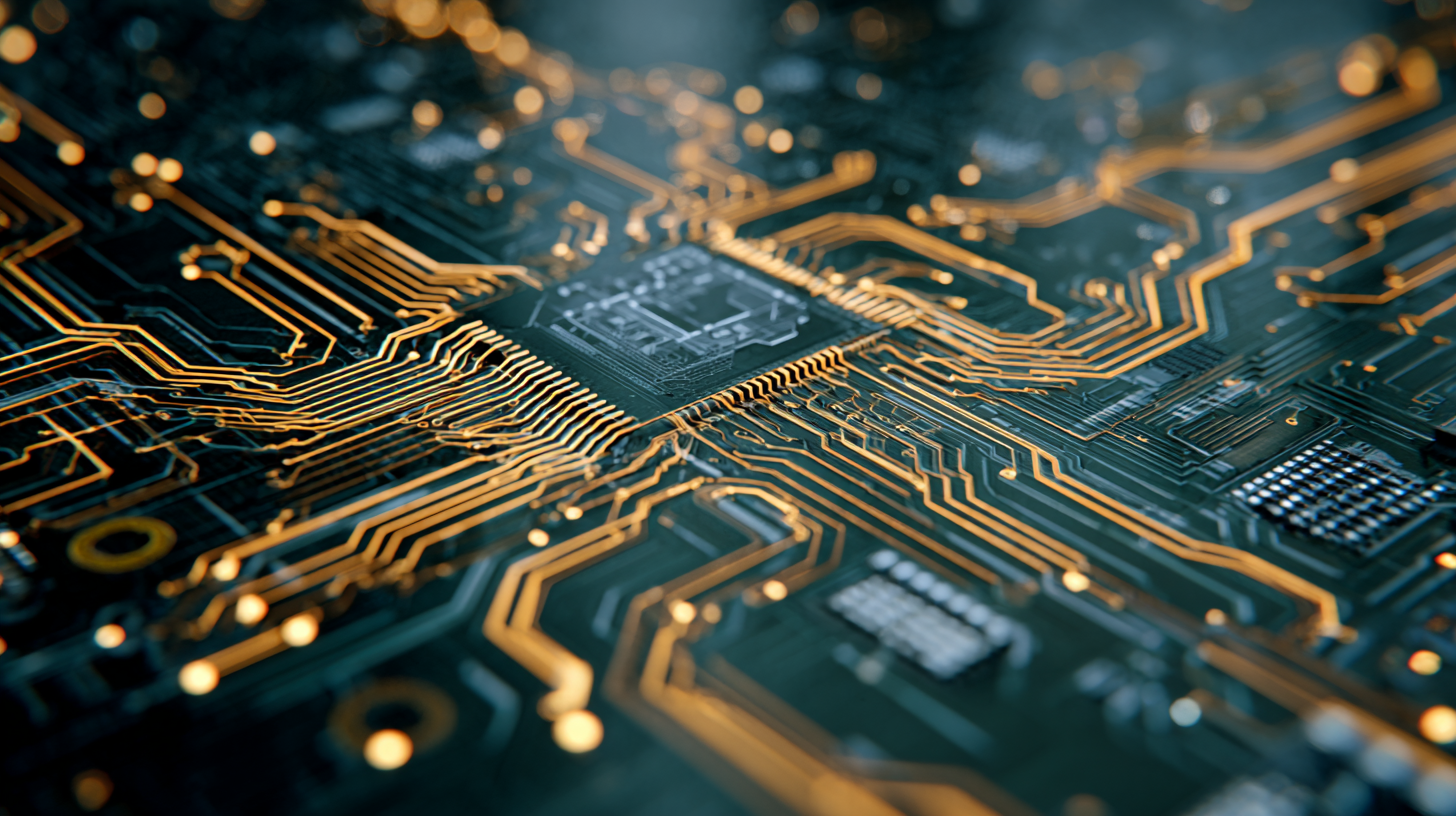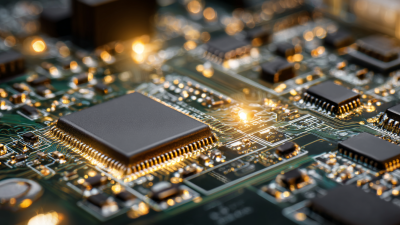Revolutionizing Industries: The Future of PCB Electronics in Sustainable Technology
The transformation of industries towards sustainable technology is rapidly evolving, with PCB electronics at the forefront of this revolution. According to a report by MarketsandMarkets, the global printed circuit board market is projected to reach USD 85.9 billion by 2026, growing at a CAGR of 3.2%. This growth is driven by the increasing demand for innovative and eco-friendly solutions in sectors such as automotive, telecommunications, and consumer electronics. The integration of advanced materials and manufacturing techniques within PCB electronics not only enhances performance but also minimizes environmental impact, aligning with global sustainability goals. As industries prioritize green practices, the future of PCB electronics will play a crucial role in shaping a more sustainable technological landscape, ultimately contributing to a circular economy that reduces waste and promotes resource efficiency.

Innovative Manufacturing Processes: Eco-Friendly Approaches in PCB Production
 The evolution of printed circuit board (PCB) electronics is significantly influenced by innovative manufacturing processes that emphasize eco-friendly approaches. According to a report by MarketsandMarkets, the global PCB market is projected to grow to $85 billion by 2027, with sustainable manufacturing practices playing a crucial role in this growth. Companies are increasingly adopting processes that minimize waste and utilize environmentally friendly materials. For instance, advancements in water-based soldering techniques and the use of recyclable substrates are helping to significantly reduce the environmental impact of PCB production.
The evolution of printed circuit board (PCB) electronics is significantly influenced by innovative manufacturing processes that emphasize eco-friendly approaches. According to a report by MarketsandMarkets, the global PCB market is projected to grow to $85 billion by 2027, with sustainable manufacturing practices playing a crucial role in this growth. Companies are increasingly adopting processes that minimize waste and utilize environmentally friendly materials. For instance, advancements in water-based soldering techniques and the use of recyclable substrates are helping to significantly reduce the environmental impact of PCB production.
Implementing eco-friendly practices not only benefits the environment but also results in cost savings for manufacturers. A survey conducted by IPC highlights that nearly 70% of PCB producers have seen a reduction in operational costs by adopting sustainable practices. This shift not only meets regulatory compliance but also enhances the brand reputation among environmentally conscious consumers.
Tips: When exploring PCB production, consider partnering with suppliers that prioritize sustainability. Look for certifications such as ISO 14001, which emphasizes effective environmental management systems. Additionally, evaluate the life cycle of PCB materials to ensure their recyclability and overall environmental impact, promoting a positive eco-footprint in your electronic products.
Emerging Materials: Biodegradable Solutions for Sustainable PCB Electronics
The emergence of biodegradable materials for printed circuit boards (PCBs) marks a pivotal shift towards sustainability in electronics manufacturing. As the industry seeks to reduce its environmental footprint, researchers are exploring innovative substrates like F/g-C3N4 reinforced banana natural fiber. According to recent studies, these bio-composite materials not only promise enhanced mechanical properties but also offer an eco-friendly alternative to traditional synthetic substrates. The integration of such sustainable solutions could significantly alter production processes and lead to reduced waste in the electronics lifecycle.

Current trends indicate that 78% of manufacturers are prioritizing sustainability, with many investing in eco-friendly materials and practices for PCB production. This shift goes beyond regulatory compliance, aiming for true environmental responsibility. Reports show that startups focusing on sustainable technologies are proliferating, with 20 out of more than 1,200 identified as leaders in the field. As these companies introduce biodegradable PCBs into the market, businesses that adopt these innovations stand to benefit from improved brand image and compliance with increasingly stringent environmental regulations. This trend not only fosters corporate responsibility but also paves the way for a greener, more sustainable electronics industry.
Smart Technologies: Leveraging AI and IoT for Enhanced PCB Efficiency
The integration of Artificial Intelligence (AI) and the Internet of Things (IoT) is transforming the landscape of Printed Circuit Board (PCB) electronics, paving the way for unprecedented levels of efficiency and sustainability. By leveraging AI algorithms, manufacturers can optimize the design processes of PCBs, predicting potential failures and automating quality checks. The result is a significant reduction in waste and defects, which is essential in today's eco-conscious market. Moreover, AI-driven analytics enable real-time monitoring of production lines, allowing for immediate adjustments that enhance productivity.
IoT technologies complement AI by facilitating seamless data exchange across the entire supply chain. With smart sensors embedded in PCBs, manufacturers can gather valuable data related to performance and environmental impact. This information, when analyzed through AI systems, can lead to innovations in energy efficiency and resource management. For instance, IoT-enabled devices can monitor energy usage in real time, helping companies to minimize their carbon footprint and operate in a more sustainable manner. Together, AI and IoT are not just enhancing PCB efficiency but are also setting new industry standards for sustainability in technology.
Revolutionizing Industries: The Future of PCB Electronics in Sustainable Technology
| Aspect | Current Status | Future Projections | Technologies Involved |
|---|---|---|---|
| Eco-Friendly Materials | Limited options available | Widespread adoption of bioplastics and recyclable materials | 3D Printing, Material Engineering |
| Energy Efficiency | Standard power consumption levels | 50% reduction in energy usage | AI Optimization, Smart Sensors |
| Production Waste | High levels of waste | Zero waste processes achieved | IoT Monitoring, Big Data Analytics |
| Design Flexibility | Rigid designs | Adaptive and flexible PCB designs | AI Design Tools, Advanced CAD Software |
| Supply Chain Transparency | Limited visibility | Full traceability enabled | Blockchain, IoT Devices |
Recycling and Waste Management: Strategies for Sustainable PCB Lifecycles
The growing concern over electronic waste (e-waste) has prompted a critical reevaluation of how we manage the lifecycle of printed circuit boards (PCBs) within broader strategies for sustainable technology. As the world generated an astounding 137 billion pounds of e-waste in 2022, stakeholders are increasingly prioritizing the implementation of effective recycling and waste management methods. New approaches such as life cycle assessments (LCA) emphasize the importance of integrating circular economy principles into PCB design and manufacturing processes, allowing for the reclamation of valuable materials while minimizing environmental footprints.
Innovative advancements in recycling technologies, including the use of carboxylic acid-based solvents for metal extraction, show promise for enhancing the sustainability of PCB lifecycles. This evolution not only addresses regulatory pressures but also aligns with corporate environmental, social, and governance (ESG) initiatives. As companies recognize the urgency behind responsible IT asset lifecycle management, sustainable practices must be instilled from the conception of electronic devices to their eventual disposal. Engaging with this call to action on recycling and waste management can significantly shape the future of the electronics industry, ensuring a healthier planet for generations to come.
Market Trends: The Impact of Sustainability on PCB Industry Growth and Innovation
The PCB electronics industry is witnessing rapid transformation driven by the global push toward sustainability. As industries increasingly focus on reducing their carbon footprint, market trends reveal a significant impact on PCB growth and innovation. Notably, the carbon nanotube market is projected to expand from $7.75 billion in 2025 to $18.98 billion by 2032, achieving a compound annual growth rate (CAGR) of 13.6%. This growth reflects the rising demand for high-performance materials that are essential for efficient PCB manufacturing and sustainable practices.
In parallel, the global electrolytic copper foil market is anticipated to reach $53.98 billion by 2024, with a forecasted CAGR of 18.8% from 2025 to 2033. This surge underscores the shift towards materials that support advanced electronics and environmentally friendly applications. With the intersection of AI advancements and diverse consumer preferences, the PCB sector must adapt to new technologies and methodologies to remain competitive. As companies navigate these market dynamics, the emphasis on sustainable technology will undoubtedly fuel further innovation and expansion in the industry.
Market Trends: The Impact of Sustainability on PCB Industry Growth
Related Posts
-

How to Choose the Best PCB Fabrication Partner for Global Supply Chain Success
-

Common Issues Faced in High Density PCB Circuit Design
-

Exploring Innovations in Printed Circuit Board Technology at the 138th Canton Fair 2025
-

The Future of Smart PCB Board Technology in Electronics
-

Digital Success in Electronic Board Manufacturing Strategies for Global Buyers
-

10 Essential PCB Printing Techniques You Need to Know
